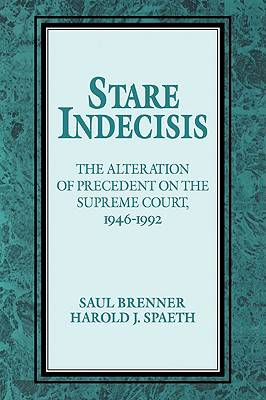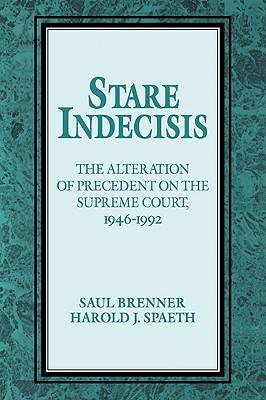
- Afhalen na 1 uur in een winkel met voorraad
- Gratis thuislevering in België vanaf € 30
- Ruim aanbod met 7 miljoen producten
- Afhalen na 1 uur in een winkel met voorraad
- Gratis thuislevering in België vanaf € 30
- Ruim aanbod met 7 miljoen producten
Zoeken
Stare Indecisis
The Alteration of Precedent on the Supreme Court, 1946 1992
Harold Spaeth, Saul Brenner, Harold J Spaeth
Paperback | Engels
€ 64,95
+ 129 punten
Omschrijving
The concept of precedent is basic to the operation of the legal system, and this book is a full-length empirical study of why US Supreme Court justices have chosen to alter precedent. It attempts to analyse those decisions of the Vison, Warren and Burger Courts, as well as the first six terms of the Rehnquist Court - a span of 47 years (1946-1992) - that formally altered precedent. The authors summarize previous studies of precedent and the Court, assess the conference voting of justices and compile a list of overruling and overruled cases. Additionally the authors draw a distinction between personal and institutional stare decisis. By using the attitudinal model of Supreme Court decision-making, which is normally seen as antithetical to the legal mode of voting, the authors find that it is the individual justices' ideologies which explain their voting behavior.
Specificaties
Betrokkenen
- Auteur(s):
- Uitgeverij:
Inhoud
- Aantal bladzijden:
- 168
- Taal:
- Engels
Eigenschappen
- Productcode (EAN):
- 9780521585521
- Verschijningsdatum:
- 2/11/2006
- Uitvoering:
- Paperback
- Formaat:
- Trade paperback (VS)
- Afmetingen:
- 152 mm x 229 mm
- Gewicht:
- 254 g

Alleen bij Standaard Boekhandel
+ 129 punten op je klantenkaart van Standaard Boekhandel
Beoordelingen
We publiceren alleen reviews die voldoen aan de voorwaarden voor reviews. Bekijk onze voorwaarden voor reviews.








